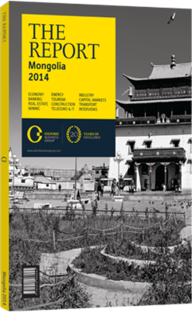Coming back for thirds: Light manufacturing offers stability when commodity prices fluctuate
The rise and return of light manufacturing is often overlooked in Mongolia, given that mining is so large and the potential in the resources sector so great. In recent years, small manufacturers have made a significant contribution to the country, in terms of supporting domestic consumption and exports. Cashmere has been a particularly strong contributor to the economy for a number of years, suggesting that the investments made in the sector were justified.
The Growth Of Manufacturing
The growth overall has been pronounced. Manufacturing as a percentage of industrial production sold was 32.2% in 2012, up from 21% in 2010, according to figures published by InfoMongolia. (Mining and quarrying were 60.3% of production sold in 2012, while electricity and water supply were 7.5%.) In tugrik terms, manufacturing production sold more than doubled in that period. Within manufacturing, the majority of the growth came from the making of coking coal and briquette, which went from 0% in 2010 to 9.4% of sold production, but other, non-mineral-related manufacturing showed considerable strength. Food and beverages output almost doubled in the three-year period through 2012 and was up six-fold in six years. The sub-category of beverages has done particularly well, up eight-fold in six years.
According to Lester Tan, executive director of the Mongolian Beverages Company, “The beer market in Mongolia is small but growing, whereas the vodka market is very large but shrinking. However, by improving the value of vodka, I believe that the opportunities for growth in this segment remain high.”
Niche Growth
Several niche manufacturing segments have gained valuable traction. For example, the tanning of leather and the manufacture of handbags, footwear and related items was up six-fold in the three years to 2012. Meanwhile, the output of wood and wooden products sold has tripled over six years. Wood and wooden products were a mere 0.2% of total industrial output in 2012. Rubber and plastic production comprised 0.1%, while paper and paper products were 0.2% of output. It is important to recognise that these segments contribute to manufacturing’s share of one-third of total industrial output, and could sustain growth when minerals and metals markets are down.
The Case For Cashmere
In 2013, resources exports were down considerably, off $205m (or 5%) from 2012.
Coal exports were worse, down $764m (or 41%). Over the same period, exports of cashmere-related goods climbed. Washed cashmere exports were up $43.4m, or 30%, while combed cashmere grew by $8.3m, or 17%. As a percentage of total exports, cashmere went from 4% to 6%. This was partly a function of efforts to improve production, marketing and branding, and partly the result of strong demand for cashmere when the market for resources was weak. Still, cashmere hedged the resources sector and helped to reduce the effects of poor coal sales on the economy.
The dairy sector is a another case study in the effects of local manufacturing. After the collapse of the Soviet Union, milk production fell 97%, from 60m litres a year. Since then it has been a long, hard climb. Most of the milk in the country was been imported, but in 2012 the country broke the 25m-litre mark again. International support of Suu JSC, Mongolia’s largest milk producer with a 60% market share, made a big difference.
In 2011, the International Finance Corporation, France’s Société de Promotion et de Participation pour la Coopération Economique and the Belgium Investment Company for Developing Countries each provided $2m to the firm, helping to offset the need for some imports.
Cost Benefits
Light industry has staged an impressive comeback in the past three years, which bodes well for the country. Manufacturing locally lowers costs, provides employment and balances resource exports.
The investment is also cheaper and more certain than that of heavy industry and can often be financed commercially. A cost-benefit analysis must always be run on the support of manufacturing, and waste and overly expensive support avoided, but in most cases, the needs and the costs make the case for investment easy.
You have reached the limit of premium articles you can view for free.
Choose from the options below to purchase print or digital editions of our Reports. You can also purchase a website subscription giving you unlimited access to all of our Reports online for 12 months.
If you have already purchased this Report or have a website subscription, please login to continue.

